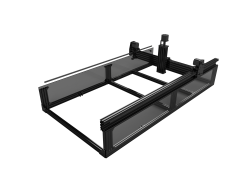C-beam Router rack and pinion
Discussion in 'CNC Mills/Routers' started by rpagewood, Sep 24, 2015.
C-beam Router rack and pinion
Discussion in 'CNC Mills/Routers' started by rpagewood, Sep 24, 2015.
I want build a frame that is as sturdy as possibility while at the same time keeping it as compact as possible. working area will be approx 1200mm x 600mm

